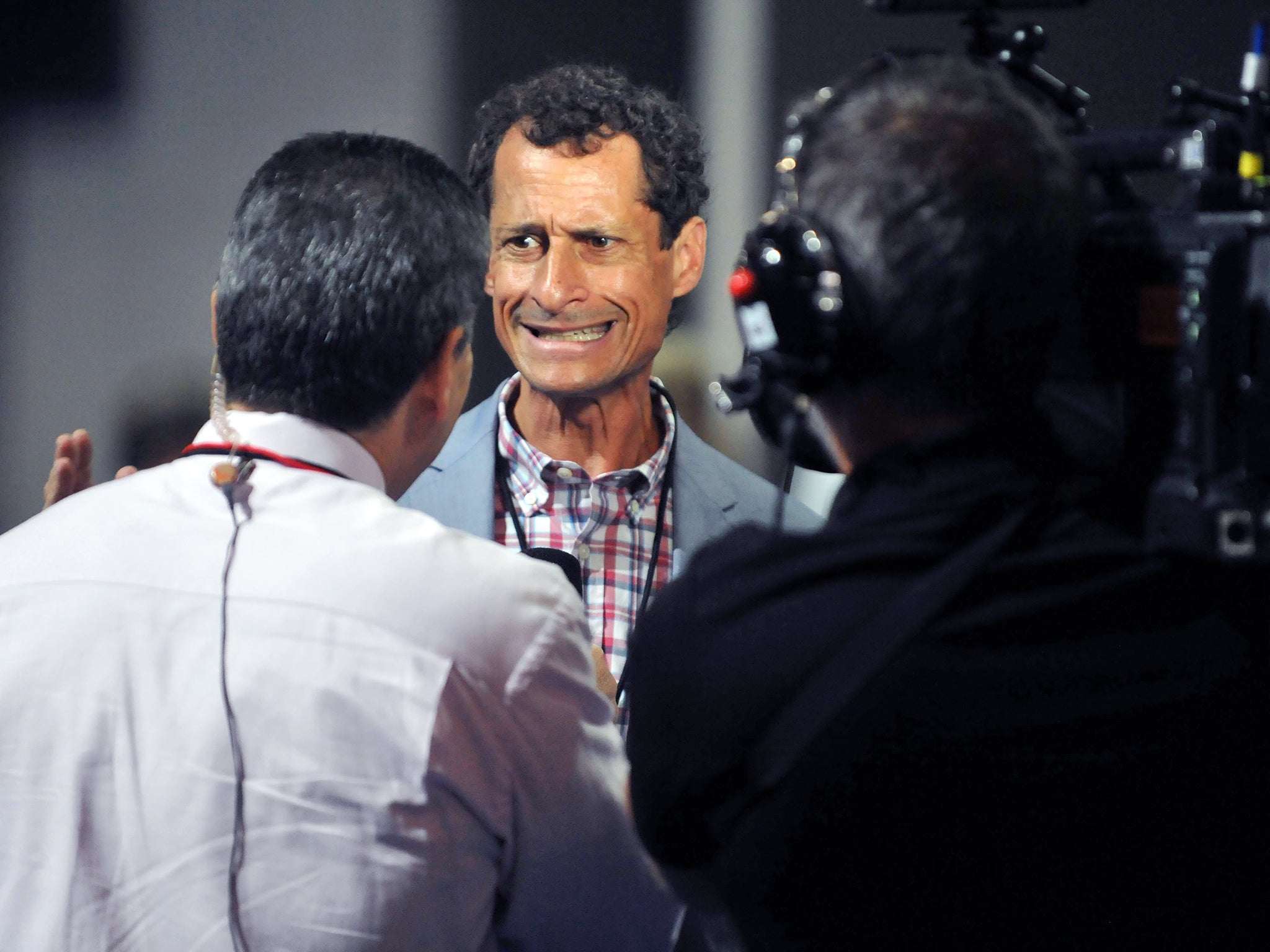Breitbart: Inside the far-right news network in bed with the Trump presidency
Breitbart News Network, accused of being a mouthpiece for xenophobes, racists and misogynists – and thrown into the spotlight this week by the resignation of its poster boy Milo Yiannopoulos for remarks on paedophilia – is so right wing it makes Fox News look like the BBC. Now that its former boss Steve Bannon is Trump’s chief strategist, nothing stands between its extremist stance and US presidential policy

Your support helps us to tell the story
From reproductive rights to climate change to Big Tech, The Independent is on the ground when the story is developing. Whether it's investigating the financials of Elon Musk's pro-Trump PAC or producing our latest documentary, 'The A Word', which shines a light on the American women fighting for reproductive rights, we know how important it is to parse out the facts from the messaging.
At such a critical moment in US history, we need reporters on the ground. Your donation allows us to keep sending journalists to speak to both sides of the story.
The Independent is trusted by Americans across the entire political spectrum. And unlike many other quality news outlets, we choose not to lock Americans out of our reporting and analysis with paywalls. We believe quality journalism should be available to everyone, paid for by those who can afford it.
Your support makes all the difference.A few days after Stephen Bannon was named chief strategist in President Donald Trump’s White House, one of his best-known proteges praised him on British television. “I am a gay Jew and he made me a star,” Milo Yiannopoulos, the frequently profane Breitbart.com columnist – now ex-columnist – and cyber provocateur, told a Channel 4 interviewer in November. While Bannon oversaw the Breitbart News Network, Yiannopoulos built an enthusiastic fan base for his caustic writings. One article proclaimed that birth control makes women “stupid and unattractive” and argued against contraception because “we need the kids if we’re to breed enough to keep the Muslim invaders at bay”. To him, most women are “hysterical hypercritical harpies towards their boyfriends and husbands the vast majority of the time”.
Yiannopoulos this week resigned from Breitbart, his comments appearing to endorse paedophilia having gone too far even for his paymasters. This was revealing, not least because a standard defence of alt-right mouthpieces, when they incite hatred with racist, misogynist and anti-Semitic vitriol, is that they are merely exercising their right to free speech, of which there should be no limit. Evidently, on certain topics, this is not the case. So musings on sex between older and younger people are apparently not acceptable – even though Yiannopoulos did not specifically refer to anything illegal.
In the past, Yiannopoulos co-wrote a column that praised the intelligence of white supremacists, and he got banned from Twitter after taunting African American actress Leslie Jones, who he said looks like “a black dude”. None of this affected his position with Breitbart, and cetainly until now Bannon has never wavered in his support for Yiannopoulos. “Bannon believes in Milo,” the site’s editor in chief, Alexander Marlow, said in an interview earlier this month. “He dedicated time and resources – both personally and with his businesses – to expanding Milo’s brand.”

In July, a month before Bannon left Breitbart to join Trump’s campaign, death threats prompted Yiannopoulos to cancel an appearance at a gay pride parade through a Stockholm neighborhood described in a Breitbart news release as a “Muslim ghetto”. Bannon declared that his star columnist’s “brand of unique cultural warfare is too valuable to risk it in potentially life-threatening situations”.
Bannon’s new White House prominence, including his recent appointment to the National Security Council’s Principals Committee, makes him one of the country’s most powerful men. But it also uniquely positions his former website as a potential force in the Trump era, a media juggernaut emphatically stamped with Bannon’s imprimatur. Already there have been indications that Bannon’s former organisation might enjoy something akin to most-favoured media status, even as the White House wages a very public verbal war with mainstream media outlets.
In January, Breitbart’s Matthew Boyle got the only reserved seat, in the front row, at Trump’s first news conference in more than five months. And earlier this month, Trump came to Yiannopoulos’s defence after violent protests prompted the University of California at Berkeley to cancel an appearance on the Breitbart celebrity’s self-proclaimed “Dangerous Faggot” campus speaking tour. “If UC Berkeley does not allow free speech and practises violence on innocent people with a different point of view – NO FEDERAL FUNDS?” Trump tweeted in response.
The ascension of the 63-year-old Bannon has prompted a smattering of speculation that Breitbart, which strongly favoured Trump during the presidential campaign, could transform itself into a mainstream news site with a more neutral or establishment profile. But that seems highly unlikely for a site that has made its mark through audacious postings and by frequently taking sides, former staffers say. “Generally, we have been fighting for the idea of nationalism, with a two-pronged approach,” said Marlow. ”One, we believe in upholding American values; they are to be respected. And two, we believe in strong countries and strong neighbours. We are deeply opposed to the corruption in international bodies and organisations.”

The site’s editorial thrust reflects Bannon’s nationalist, immigration-restrictionist beliefs and trumpets Breitbart’s continuing grievance and outrage against those who trespass against its worldview. The homepage focuses on a handful of thematic categories: praise for President Trump; attacks on his critics and on the news media’s coverage of his presidency; praise for like-minded nationalist politicians such as the Netherlands’ Geert Wilders and France’s Marine Le Pen; stories critical of left-leaning political figures such as Michael Moore, Lena Dunham and George Soros; and random reports about immigrants and refugees causing trouble in their adopted lands, especially Europe and the United States. When Trump imposed a travel ban on refugees from seven predominantly Muslim nations, many news organisations focused coverage on mass airport protests and legal criticisms. Breitbart took a different tack. The headline on its lead story blamed a Muslim rights group with supposed links to terrorist organisations for “promoting protests & lawsuits as Trump protects nation”.
The framing of the piece sent a possible signal about what the President’s enemies might expect from the site. And so, from Capitol Hill to the lobby shops on K Street, a single question is being asked about Breitbart in varying incarnations, and in tones ranging from glee to sheer terror: “Do they weaponise Breitbart to go after anyone who opposes Trump? “
***
In March 2012, a frisson of anxiety coursed through the Los Angeles headquarters of Breitbart.com. The sudden death of its founder, Andrew Breitbart, had cast the site’s future in doubt. Staffers gamely posted photos with the hashtag #war, a statement of their commitment to carrying on Breitbart’s legacy of fearless, pugnacious reportage and commentary targeting what he considered mainstream media bias and lies. But beneath the bravado, some fretted. A source of concern was the rise of Bannon to the chairmanship of the site, according to former staffers who spoke on the condition of anonymity, out of fear of personal attacks or because of confidentiality agreements. Some on the staff worried that Breitbart, which prided itself in skewering the mainstream media, might morph into something very different, an embodiment of their new leader’s passions and grievances, something closer to a de facto “Bannon.com”.
Over the next four years, Bannon built a far-right-wing media sledgehammer, an enforcer of orthodoxy that its fans praised for its swagger and that its critics labelled xenophobic or worse. He presided over the news organisation from an ornately appointed Capitol Hill townhouse dubbed the “Breitbart Embassy” and an office in Los Angeles. Bannon was brilliant, cunning and domineering, a macho rah-rah guy when pleased and a volcano when angry. Bannon’s eruptions “were theatrics in a lot of cases”, said Marlow, the Breitbart editor in chief. “Steve is not the easiest boss in the world, but there was a strategy to what he was doing. “
Bannon did not respond to interview requests.
***

The combative site came to the fore over a dinner in Israel in 2007. Andrew Breitbart, a charismatic new-media innovator, had travelled there on a press junket with Larry Solov, an attorney he had been friends with since they grew up together in Jewish families in Brentwood, a wealthy enclave of Los Angeles. Breitbart told Solov that he wanted to launch a news organisation that would “change the world”, and he hoped his friend would join him as a co-owner. In the early days, Breitbart’s site operated out of his basement in LA. Later, Bannon, who had befriended Breitbart while featuring him as the centerpiece of a documentary about the Occupy protest movement, lent office space.
The site’s puckishness made it famous, but its loose, unconventional standards could get it into trouble. In 2009, Breitbart’s Big Government site, an offshoot of Breitbart.Com, published an undercover video of activist James O’Keefe pretending to discuss setting up a brothel using underage girls with an employee of the Association of Community Organisations for Reform Now, better known as Acorn, which advocated for affordable housing and health care. Later, it was revealed that the videos were misleadingly edited. O’Keefe settled an Acorn employee’s lawsuit, saying he “regrets any pain” caused to the man. The next year, the site published another heavily edited videotape, this time depicting Shirley Sherrod, an African American employee at the Department of Agriculture, seeming to make anti-white statements at a local NAACP event in Georgia. Sherrod was fired. But a full version of the video revealed that her complete remarks had, in fact, condemned anti-white thinking, and USDA asked her to return. (She later filed a lawsuit that was settled for an undisclosed amount several years after Breitbart’s death.)
Despite those missteps, the site’s relentless approach could pay dividends. It broke huge news in 2011 about the sexting activities of Democratic New York Congressman Anthony Weiner, eventually leading to his resignation from Congress.
Breitbart’s internet experience – he worked closely with Matt Drudge, the high-powered internet aggregator, and later crossed the ideological divide to help launch the left-leaning Huffington Post – gave him cachet on Capitol Hill, where he was ushered into the offices of top Republicans. After Breitbart’s death from heart failure at 43, Capitol Hill came to fear the Breitbart echo-chamber effect, a phenomenon that rippled through the conservative media world and could whip readers into a frothy rage, as stories pinballed to talk radio and Fox News commentators.
As a private entity, Breitbart News’s corporate records are not public. Politico reported that the site receives significant financial backing from Robert Mercer, a hedge-fund billionaire, and his daughter, Rebekah. Bannon, a former staffer said, portrayed himself internally as a bridge between the site and the Mercers. The Mercers did not respond to interview requests. While running Breitbart, Bannon also received a total of $376,000 (£302,000) in salary from 2012 to 2015 from a small nonprofit group, the Government Accountability Institute or GAI, which received a large amount of its funding from the Mercers, according to a Washington Post investigation. At Breitbart, Bannon brought on aggressive staffers, such as Matthew Boyle, a hard-charging Washington reporter who pounded then-Attorney General Eric Holder Jr with stories about criticism of the troubled Operation Fast and Furious border gun-tracking program, and Yiannopoulos, who became the site’s biggest star.

Bannon boasted in a Mother Jones interview last August that Breitbart is the “platform for the ‘alt-right’”. That term typically refers to a far-right movement whose followers hold racist, anti-Semitic and sexist beliefs and who desire a whites-only state. In a November interview with the The Wall Street Journal, Bannon sought to define the alt-right differently, saying it is composed of “younger people who are anti-globalists, very nationalist, terribly anti-establishment”.
The site has published pieces that present the alt-right in a sympathetic manner, most notably a March 2016 piece co-written by Yiannopoulos that was headlined, “An establishment conservative’s guide to the alt-right.” The article notes, “There are many things that separate the alternative right from old-school racist skinheads (to whom they are often idiotically compared), but one thing stands out above all else: intelligence. Skinheads, by and large, are low-information, low-IQ thugs driven by the thrill of violence and tribal hatred. The alternative right are a much smarter group of people – which perhaps suggests why the Left hates them so much. They’re dangerously bright ... For decades, the concerns of those who cherish Western culture have been openly ridiculed and dismissed as racist. The alt-right is the inevitable result. “
Yiannopoulos has waded into race issues, seemingly tweaking affirmative action supporters by offering a “privilege grant” in early 2016 that was exclusively for white males “in support of their secondary education”. When accused of racism, Yiannopoulos has sometimes responded with crude descriptions of sex acts he performs with his black boyfriend. “Milo is the number one free-speech warrior of his generation, and I’m maybe number two,” Marlow said. “He’s a deliberate provocateur. He wants to challenge people. He wants to get you thinking about issues in ways that you thought you weren’t allowed to think about ... A lot of it is satire.”
The site routinely stirred controversy related to the hot news story of the moment. It published a defence of the Confederate flag two weeks after the massacre at an African American church in Charleston, South Carolina, by a white supremacist gunman who had posed with the flag. It also compared the Martin Luther King To Pamela Geller, the organiser of a prophet Muhammad cartoon contest in 2015, where two men who were followers of Isis were killed by police after they sought to ambush participants. “Anyone who knows anything about history understands that tactically and morally, Geller’s provocative Muhammad Cartoon Contest was no different than Dr Martin Luther King’s landmark march from Selma to Montgomery,” one staffer wrote. Early last year, Breitbart published an opinion piece by former Republican Colorado Congressman Tom Tancredo, headlined “Political correctness protects Muslim rape culture”. The article asserted that “Muslim rape culture is not a ‘dirty little secret’ – it is widely recognised as integral to Islam as taught in the Koran and the Hadith. Like honour killings and other parts of Sharia, it will not be wished away. And like honour killings, with massive Muslim immigration on the horizon, it could be coming to a town near you all too soon.”
Tancredo’s claim is contrary to widely accepted, mainstream interpretations of Islamic doctrine. “We don’t regard Breitbart as a legitimate news organisation in any sense. They’re a white supremacist, anti-Islam hate site,” Ibrahim Hooper, a spokesman for the Council on American-Islamic Relations, a District of Columbia-based Muslim advocacy group, said in an interview. Bannon and others involved with the site have bristled at critics’ claims that it foments prejudice. In an interview with The Washington Post last year, Bannon said: “We call ourselves ‘the Fight Club’. You don’t come to us for warm and fuzzy. We think of ourselves as virulently anti-establishment, particularly anti- the permanent political class. “

Breitbart editors also have disputed accusations of racism, xenophobia and anti-Semitism. Joel Pollak, an editor-at-large at Breitbart who describes himself as an Orthodox Jew, said on CNN: “Steve Bannon does not have a bone of prejudice in his body.” Ben Shapiro, a former Breitbart editor-at-large who has been critical of the site, described Bannon as “an old-school nationalist” who believes in restricting immigration as a way of preserving Western civilization, but not as a racist. But the website’s editorial decisions, including its many barbs aimed at former President Barack Obama, have made it a frequent target of criticism from the left. The site was blasted for using the tag “black crime” amid the national controversy over police shootings of African Americans and the surge in attention for the Black Lives Matter movement. “I think President Obama helped to make Breitbart what it was because they tried to be a tip of the spear in opposition to him in the most bombastic of ways,” said Bill Burton, a former deputy press secretary in the Obama White House. “When they tagged black crime as something to search for on their website, that was not an accident.”
There has been some attempt to fight back against Breitbart. The backlash includes a boycott movement by a group called Sleeping Giants that says it has contacted hundreds of advertisers to persuade them to blacklist Breitbart from their ad buys. It’s unclear how effective that effort has been. Separately, Kellogg Company last autumn said it wouldn’t advertise on Breitbart because the site isn’t “aligned with the values of our company”. (In response, Breitbart launched a counter-boycott of the breakfast-food company under the hashtag #DumpKelloggs.)
With Bannon steering the editorial direction, the site has hammered Republicans who are viewed as veering toward the centre, especially those who participated in talks on immigration reform. “He was determined to destroy people left and right,” said a former staffer. “It’s a very paranoid mind-set.”
Marlow rebuffed that claim. “Not paranoid at all,” he said of Bannon. “Like many on the left and few on the right, he plays to win.”
Former Republican Virginia Congressman Eric Cantor, who had risen to House majority leader, became one of the most high-profile casualties of Breitbart’s ire. During Cantor’s ill-fated 2014 re-election campaign, Breitbart barraged its readers with stories portraying the Virginian as soft on immigration.
***
During the 2016 presidential campaign, Bannon tightened his control of the editorial stance of the site, according to former staffers. He dictated “the narrative of the day”, personally approving stories about Trump or his then-rival, Senator Ted Cruz, the former staffers said. Negative stories about Cruz – such as those questioning his eligibility to become president because he was born in Canada – often got big play, while negative stories about Trump would be killed or diminished, former staffers said. For a time, that stance put Breitbart at odds with its patron, the Mercers, who funded a super PAC backing Cruz and whose chief strategist was Kellyanne Conway, the Washington-based pollster who later joined Trump’s campaign. Marlow describes it differently, saying he and Bannon reviewed Trump and Cruz stories because they were widely read. “It was about quality control and gaining credibility, not politics,” he said. Kurt Bardella, whose public relations firm represented Breitbart for two years, described Bannon as “a dictator” in a column published by The Hill newspaper. He accused Bannon of “purposefully changing the narrative to increase vitriol, playing to the fears of his readers”.

Another frequent target was presidential candidate Marco Rubio. “We’re going to be relentless on Rubio,” Bannon said in an interview last year with The Daily Beast. “Trust me, brother, we’re coming. We’re not backing off.”
Rubio tried to dismiss Breitbart in a Fox interview, saying, “I literally don’t even talk about the things they report because they’re basically conspiracy theories and oftentimes manipulated.”
As the site became more aggressively pro-Trump, the New York developer’s critics could count on rough treatment. The site blasted a prominent conservative commentator for opposing Trump in an article headlined: “Bill Kristol: Republican spoiler, renegade Jew.” The piece, written by a Jewish author, David Horowitz, said, “To weaken the only party that stands between the Jews and their annihilation, and between America and the forces intent on destroying her, is a political miscalculation so great and a betrayal so profound as to not be easily forgiven.” (Kristol told CNN, “I think I’m, I’m a proud Jew, strong supporter of Israel.”)
Internally, the editorial stance chafed with some staffers. The discontentment spilled into public view when the site sided with Trump against one of its own reporters, Michelle Fields. Fields said she was roughly shoved by then-Trump campaign manager Corey Lewandowski at a campaign event. Video of the incident and the eyewitness account of a Washington Post reporter supported her. But Breitbart published a piece that questioned her version of events. “Breitbart became a Trump propaganda outlet,” said Shapiro, a former Breitbart editor-at-large who resigned after the Fields incident. “There’s a difference between calling out the media and being a shill for a candidate. Andrew never wanted his website to do that. Bannon, obviously, didn’t give a crap.”
For all the controversies, the campaign was good for Breitbart’s numbers, as it was for many news organisations. Its traffic grew steadily, peaking at 23 million unique visitors in November, according to ComScore, a tracking firm. (Breitbart claims it reached 45 million readers in November. It is not uncommon for internal metrics to differ from those of tracking firms.)
There’s no doubt that Breitbart is a major force within its niche. Less clear is whether its influence extends further. Its December ComScore traffic total of 10.9 million, for example, puts it on par with such websites as Mic and the Daily Dot. CNN’s website, by contrast, attracted 93.8 million unique visitors during the same month.
***
Breitbart has laid out an ambitious expansion blueprint, announcing plans to hire more US-based staff and open operations in Europe. Breitbart’s editorial thrust in favour of national sovereignty and against open borders and mass immigration are likely to sync with the populist movements sweeping Europe. A semiregular feature is stories about crimes allegedly committed by immigrants, both in the US and in Europe. An echo of that approach can be seen in Trump’s executive order requiring weekly publication of crimes committed by undocumented immigrants. Breitbart will embark on its new chapter with a growing number of its alumni in positions of government power. Bannon has been joined in the White House by two prominent Breitbart staffers: Julia Hahn, who has frequently written critical pieces about House Speaker Paul Ryan, and Sebastian Gorka, who served as Breitbart’s national security editor. Marlow, the executive editor, said he has had “very little communication with Bannon since the election”, and he cited Breitbart’s criticism of the rollout of Trump’s immigration order and the site’s tracking of Trump’s “broken promises” as evidence of Breitbart’s independence. Shapiro, the former Breitbart editor who now runs a rival site, predicted: “They’re still going to be the house organ for Trump, the in-house tool of Bannon. They will never go against the Bannon line”.
In the hours after the President announced financing plans for an expanded US-Mexico border wall, Breitbart. Com was offering to sell a special product to its readers on its homepage: a “Breitbart Border Construction Co” T-shirt.
© The Washington Post
Join our commenting forum
Join thought-provoking conversations, follow other Independent readers and see their replies
Comments